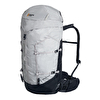Sas de Dlacia, the alpinists' village

 1 / 12
1 / 12 archivio Camping Sas de Dlacia
archivio Camping Sas de Dlacia
As you look across the crag, left towards the river bed and then right towards the Scotoni hut, you reach the summit of Cima Scotoni as it reflects in the small Lagazuoi lake. After the river, instead of heading right, the route leads right past Conturines to Sas de la Crusc (Sasso della Croce). These world famous mountains have witnessed three generations of alpinists as they forged extremely difficult routes up these smooth walls (Livanos, Cozzolino, Messner, Huber…).
It’s winter now. The village also offers small apartments for those who don’t necessarily want to stay in an tent, and the campsite is a great starting point for ski mountaineering trips, cross country skiing and snowshoe walking.
The routes all start from the village: back up to the summit of Cima Scotoni, to reach the Lago col and continue on to Fanes; alternatively, continue on to Lagazuoi and descend into the Ampezzo basin through via the Travenanzes valley, or Pocol via the paths used during the First World War. And if, instead of heading right, you continue up the river bed, you enter the Fanes massif via Col Loccia and a plateau where every mountain is a sought-after destination for walks through a fantastic landscape (the one that gave rise to the Fanes fairytales). Mt Varella is an excellent example; three thousand meters high it comfortably dominates all and it can easily be ascended up to its final slope via a fairly large gully that needs to be climbed on its sides to avoid the avalanches. Its opposite face provides a daring descent for experienced skiers, otherwise the gully is a fine descent, making sure you keep high on the ridge to reach the Limo pass. The view opens up onto the Col Becchei opposite, with its ideally angled slope and panorama across the Ampezzo basin, all the way to the Pale di San Martino and the Austrian Hohe Tauern mountain range, past Marmolada and Ortles. The snow-filled valley leads down, overlooked by Pic Fanes and countless other peaks, into Val Badia which you reach tired but serene after a long climb without risks.
For the less experienced mountaineers, the looming Piz Armentarola and Bandiarac walls can be admired from the valley floor, while Angelo’s local pine needle risotto more than makes up for the day out in the mountains.
Bepi Di Marino



 Copia link
Copia link









 See all photos
See all photos






















